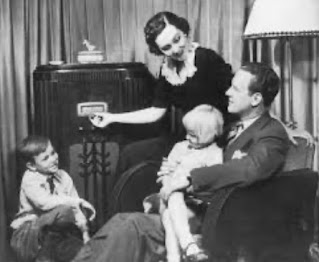Diffusion of Innovations Theory
The Radio
The Diffusion of Innovations Theory is an experimental process to show how various technologies are widespread globally for society’s use. This theory combines a series of steps for a specific technological process which includes: the pioneers, the early adopters, the early majority, the late majority, the late adopters, and the laggards.
I am going to discuss and demonstrate how the “radio” is an example of the Diffusion Theory, which shows how this technology was a cutting-edge breakthrough in society.
The radio was not developed by just one pioneering individual, but rather by a collective group of innovative men who contributed different parts and upgrades to bring the radio to life. In the 1890s, Guglielmo Marconi was credited with inventing and patenting the first-ever radio. Then in 1806, Reginald Aubrey Fessenden made it possible for broadcasting signals to be projected at greater distances over longer periods, ultimately projecting “the first human voice” over the air. In 1907 De Forest Lee found a way for live broadcasting signals to be scheduled at certain times. All of these inventive men were credited as the “Fathers of Radio,” however, these pioneers needed the public approval and support for their innovation to reach its potential and spread worldwide.
Journalists viewed the radio as an opportunity to spread the news through a faster route than any newspaper ever could. The journalism community was seen as a group of early adopters who wanted this technology to be the latest and greatest technological advancement in American society. Because these early adopters embraced the technology, journalists were able to share the never-before-heard live broadcasts to the public.
The public was seen as the early majority or prime target group since they were the ones to control the amount of mass attention the radio accumulated. The first radio was the main premier technology in the 1920s through the 1950s. This gave most people a chance to join together as a society in their individual homes and listen to politics, music, news, and leisure activities through an on-air broadcast promoting the use of this technology. Major News Corporations saw how much the public enjoyed listening to the radio. They saw a lucrative moneymaker and wanted a share by “marketing” this primetime technology. This was a golden opportunity and even though they were a little late to the party, they had no problem being late adopters. The news corporations seemed to wait and see if this technology would succeed or fail. When they realized the public’s overwhelming positive opinions of the radio, the corporations were all in.
Finally, the laggards are certain members of the public who prefer to refrain from using the first radio. The radio was a huge societal shock to most people because they were used to getting their news from a newspaper. However, with the many news corporations and the public using the radio, the laggards had no choice but to adopt the technology.
During the 1920s, the radio set itself apart as the big tech comm advancement during WW1. The radio provided many jobs and another source as a news outlet. It became necessary for the radio to be closely monitored due to foreign messages translated directly from foreign nations controlled by the government.
As a radio consumer during the 1920s, adopting the radio was very exciting which helped make the radio extremely popular. Families gathered around the tiny little box in the comfort of their homes to listen to the news of the day. All of the positive aspects of the radio far outweighed the negatives and led to its use as a main platform for journalism and music for decades.
News corporations viewed the cost-benefit analysis of the radio to be a great investment as another way for the public to get their news. The radio was a technology that would change communication forever.
The Diffusion of Innovations Theory provides information on how the public perceives the radio and how it impacts society. The radio was transformed from small insignificant metal parts to the premier broadcasting platform across America.








No comments:
Post a Comment